
It's a Wonderful May 13th!!! Do something to make somebody feel lucky today!
Scroll down and enjoy the latest comprehensive weather to the max...... occurring because of the natural physical laws in our atmosphere.
Chilly start to the week but the heat ridge builds in fast.even faster than yesterdays forecast. First 90 degree temperatures of the year in some places late this week. How long with the heat last?
Bullish for ng cooling degree days. Good for drying rates and rapid germination of crops that get planted in a week. Storm in the Plains next weekend......then very heavy rains to excessive rains Upper Midwest along a stalled front.
Here are the latest hazards across the country.
Purple/Pink/blue on land is cold/Winter weather. Brown is wind, Green is flooding. Gray is fog. Reddish is a red flag advisory.
Go to the link below, then hit the location/county on the map for details.
https://www.spc.noaa.gov/ Go to "hazards"



Wind map Press down on this on the left with your cursor!


Current Jet Stream

| Low Temperatures Tomorrow Morning |

Chilly air here for another day.............but that will change drastically!
Temperature colors on the maps below still need to be adjusted down to cooler shades.



Highs for days 3-7:
First heat of the season for many places. Some spots hit 90 degrees.
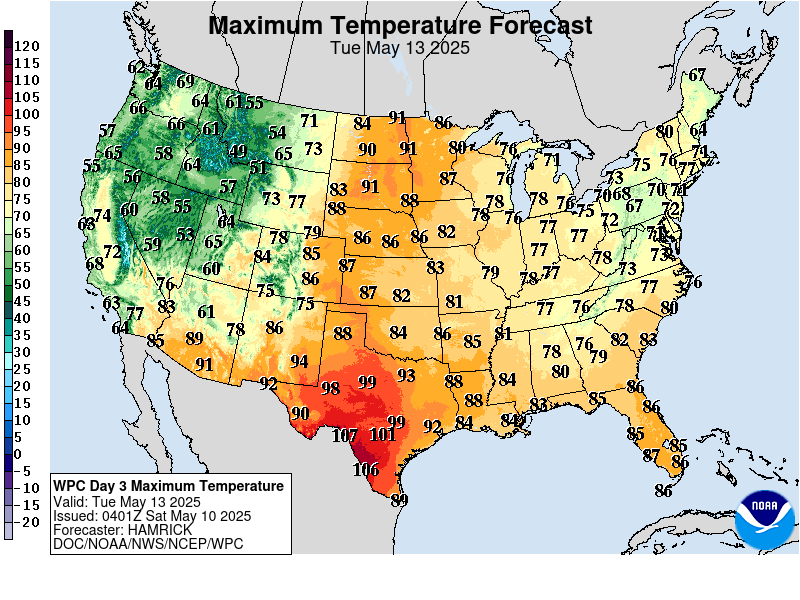
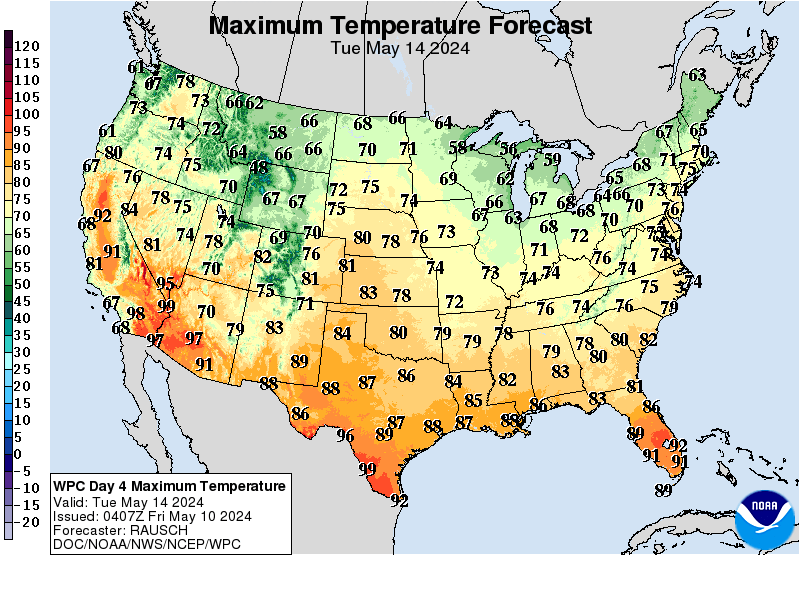
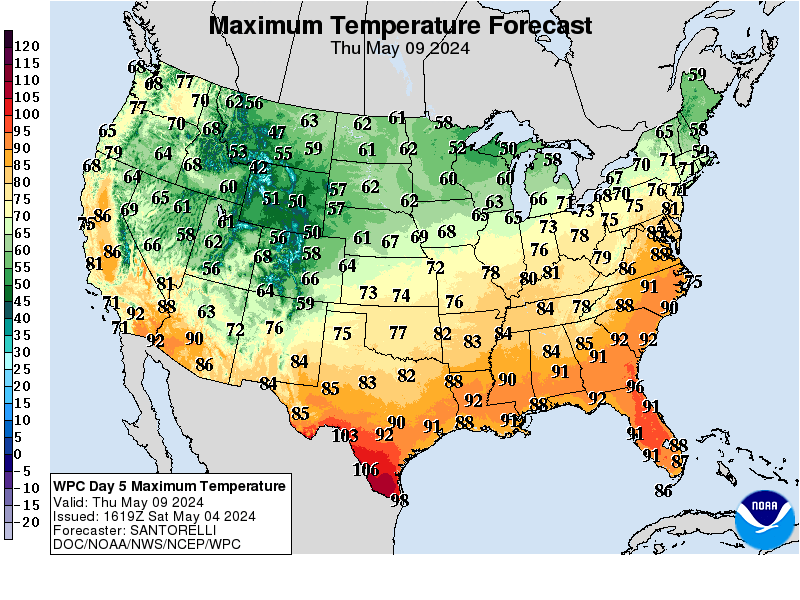
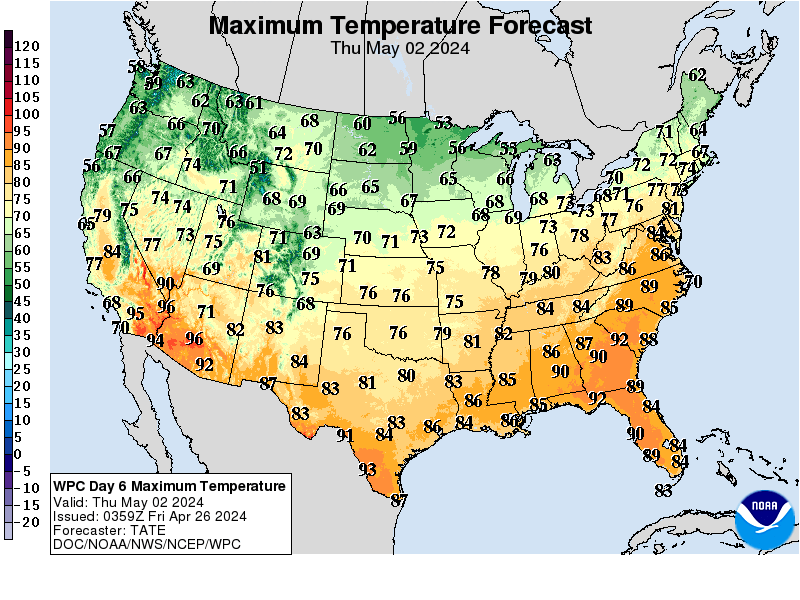
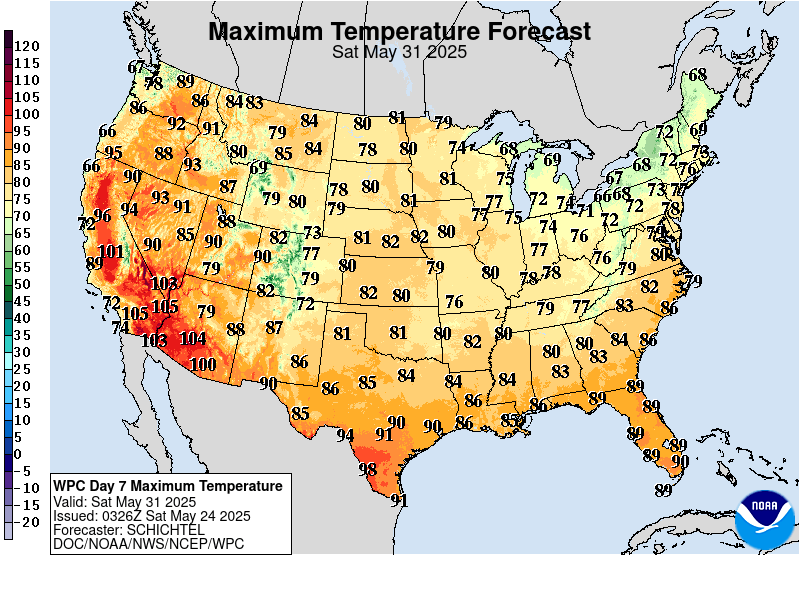
Major league warm up with red anomalies here for the 3-7 day period, growing and moving east as the week goes on.
https://www.wpc.ncep.noaa.gov/medr/medr_mean.shtml
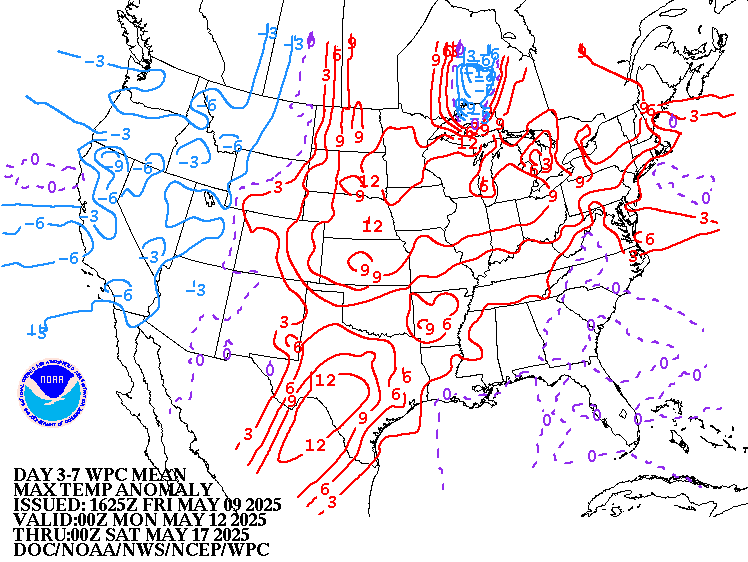
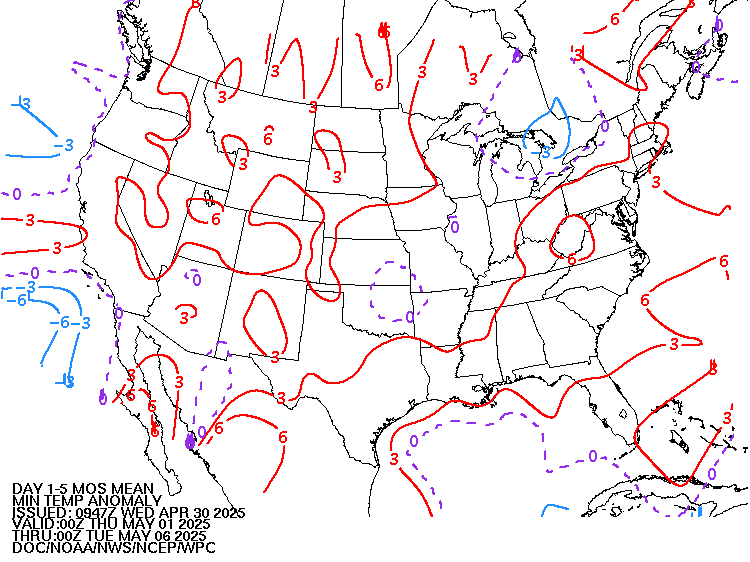
Weather maps for days 3-7 below
Southerly flow and much warmer air surging north and east as the week goes on. Big Storm in the Plains this weekend. New potent thermal boundary/front sets up in the Upper Midwest this weekend that acts as a focus for waves of heavy thunderstorms.............around the periphery of a heat ridge.
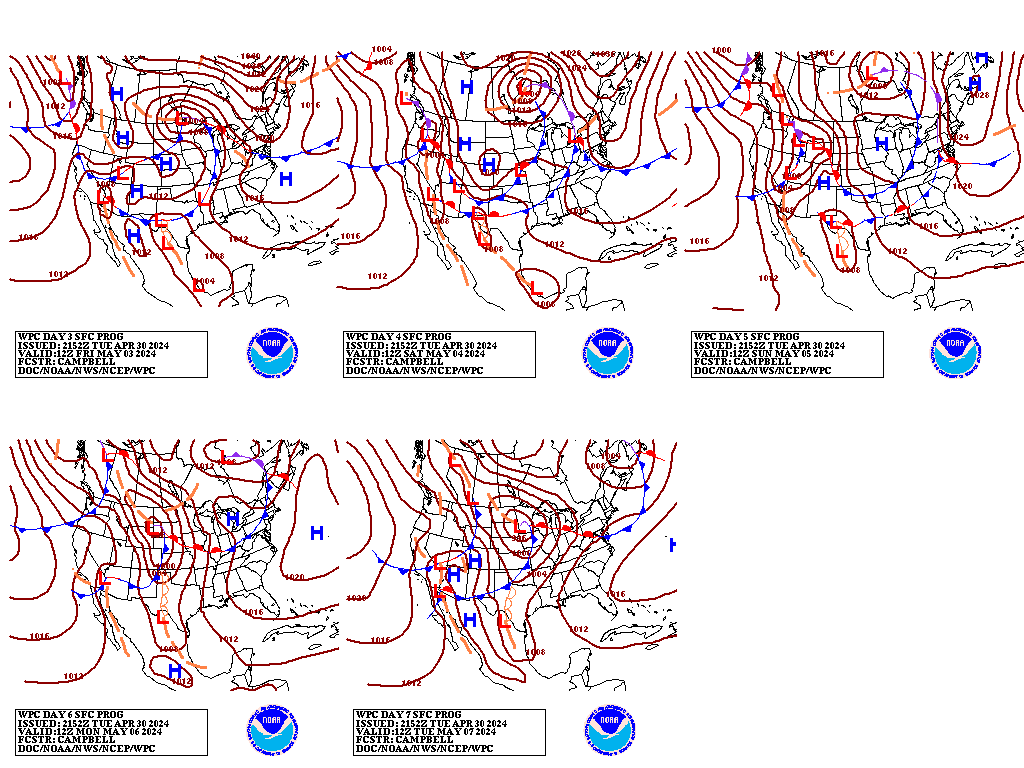
Last 24 hour precip top map
Last 7 day precip below that
https://www.wunderground.com/maps/precipitation/daily


Liquid equivalent precip forecasts for the next 7 days are below.
Drier this week but still some scattered showers. Turning very warm in much of the Cornbelt to dry things faster. New big storm in the Plains next weekend. New area of heavy rains sets up in the Upper Midwest.
Day 1 below:
http://www.wpc.ncep.noaa.gov/qpf/fill_94qwbg.gif?1526306199054
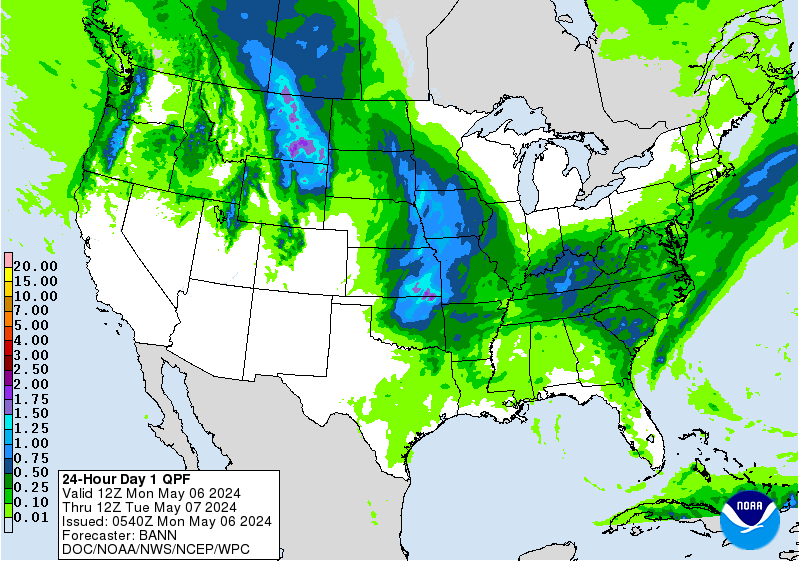
Day 2 below:
http://www.wpc.ncep.noaa.gov/qpf/fill_98qwbg.gif?1528293750112
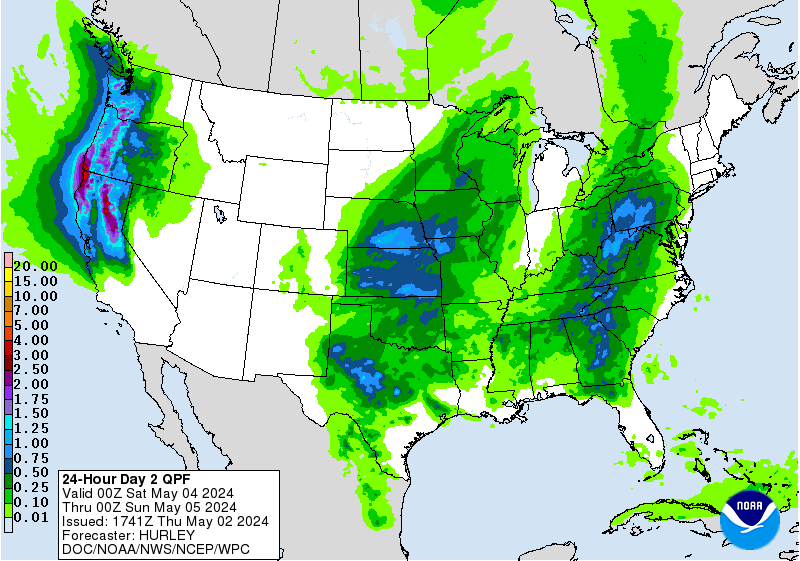
Day 3 below
http://www.wpc.ncep.noaa.gov/qpf/fill_99qwbg.gif?1528293842764
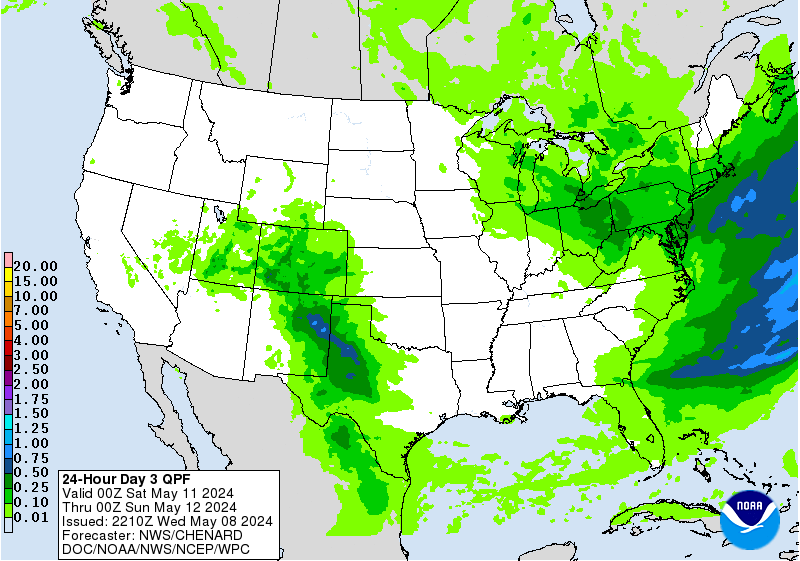
Days 4-5 below:
http://www.wpc.ncep.noaa.gov/qpf/95ep48iwbg_fill.gif?1526306162
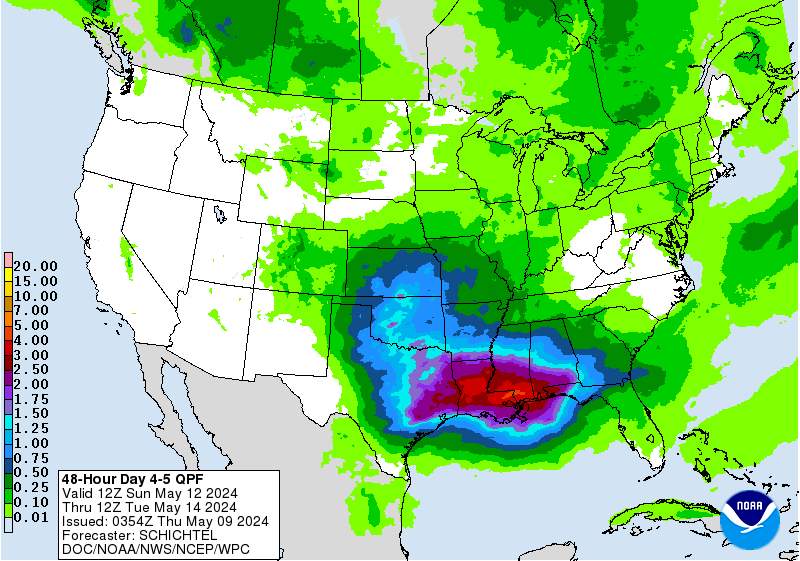
Days 6-7 below:
http://www.wpc.ncep.noaa.gov/qpf/97ep48iwbg_fill.gif?1526306162
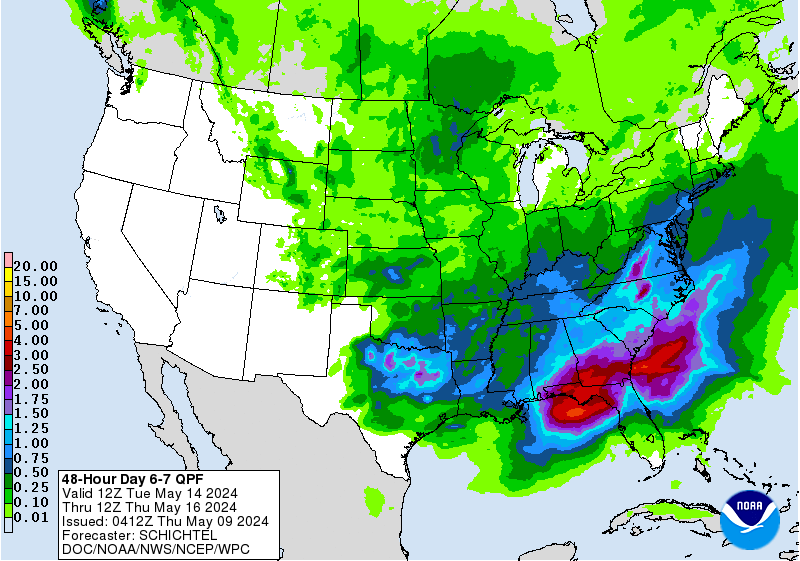
7 Day Total precipitation below:
http://www.wpc.ncep.noaa.govcdx /qpf/p168i.gif?1530796126
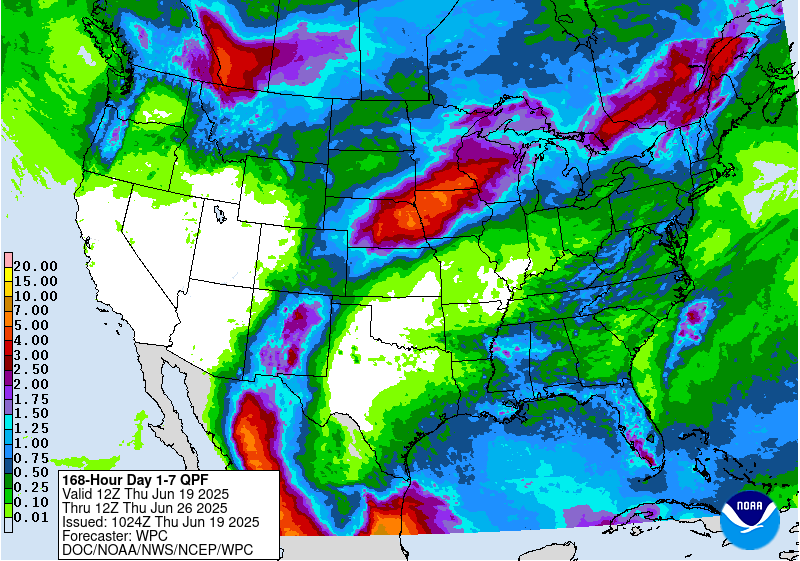
Excessive Rainfall Forecasts.-none
Mesoscale Precipitation Discussions
Current Day 1 Forecast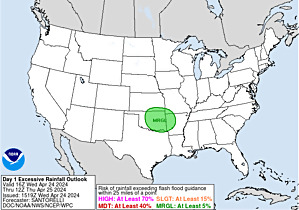 Valid 12Z 04/22/19 - 12Z 04/23/19 |
Day 1 Threat Area in Text Format
| Day 2 and Day 3 Forecasts |
Current Day 2 Forecast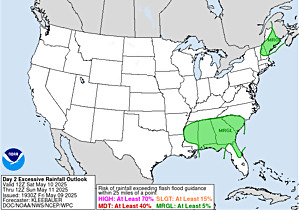 Valid 12Z 04/23/19 - 12Z 04/24/19 |
Day 2 Threat Area in Text Format
Current Day 3 Forecast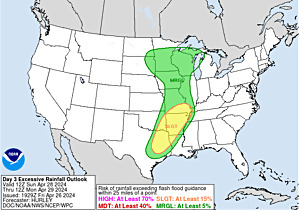 |
Severe Storm risk-low-until the end of the week.
Current Dew Points

Latest radar loop
http://www.nws.noaa.gov/radar_tab.php


| (3400x1700 pixels - 2.2mb) Go to: Most Recent Image |

Go to: Most Recent Image
You can go to this link to see precipitation totals from recent time periods:
https://water.weather.gov/precip/
Go to precipitation, then scroll down to pick a time frame. Hit states to get the borders to see locations better. Under products, you can hit "observed" or "Percent of normal"
+++++++++++++++++++++++++++++++++++++++++++++++
Precipitation compared to average for the last 7, 14, 30 and 60 days.
The Cornbelt has had way too much rain. We will be drying out(but not completely dry) for the next week.
How long will that go on??? Add some big heat to help this week.
Usually not updated for previous day until late the next day.
https://www.atmos.illinois.edu/~snodgrss/Ag_Wx.html




Soilmoisture anomaly:
These maps sometimes take a day to catch up to incorporate the latest data(the bottom map is only updated once a week). Still too wet to plant in many places, especially the Eastern Cornbelt and Upper Midwest.
Heat arrives later this week to dry things much faster........and promote quick germination rates.
https://www.cpc.ncep.noaa.gov/products/Soilmst_Monitoring/US/Soilmst/Soilmst.shtml#
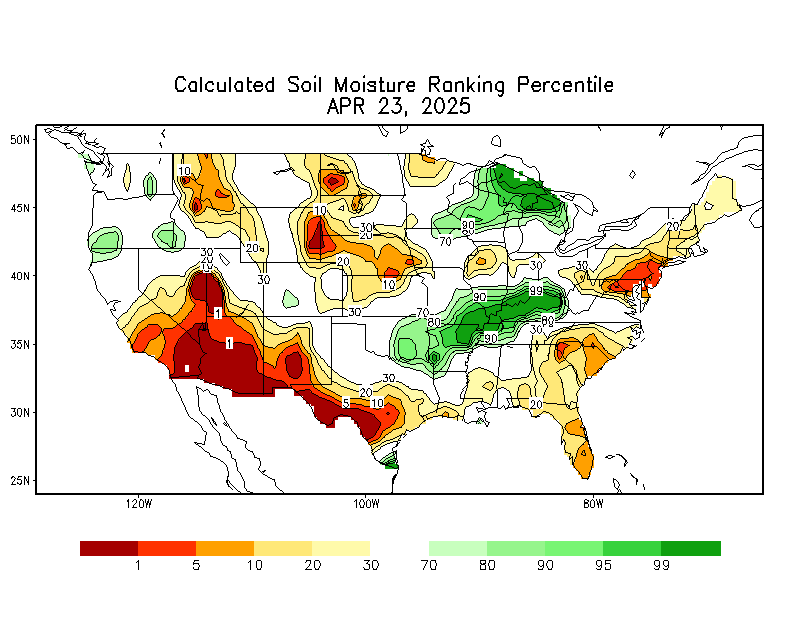
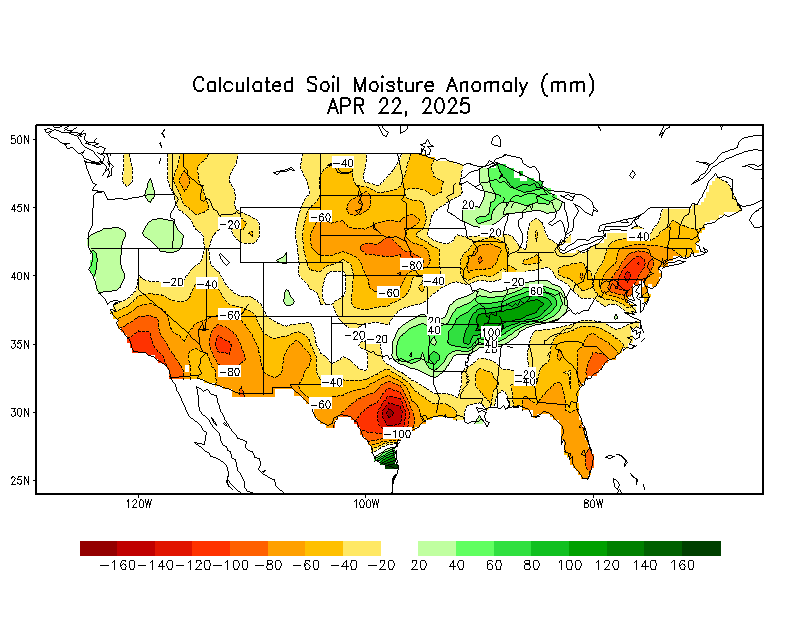
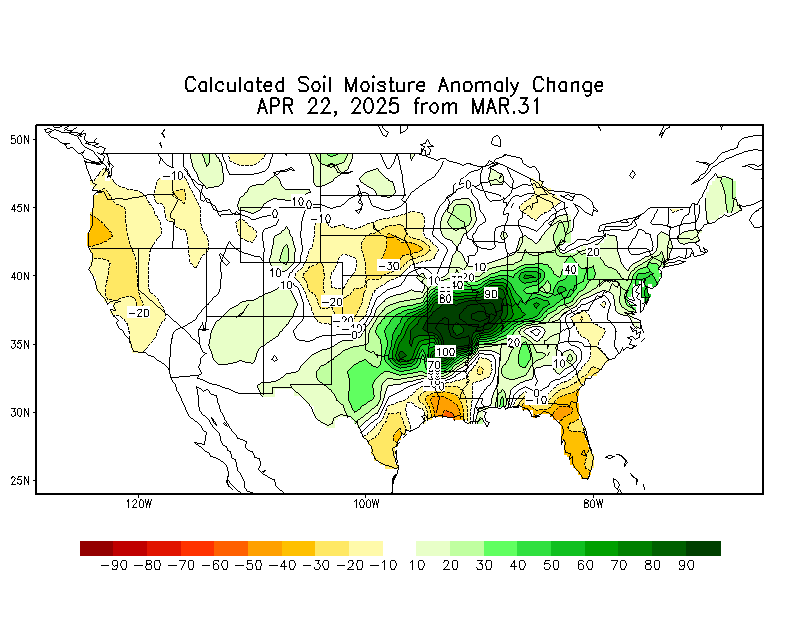
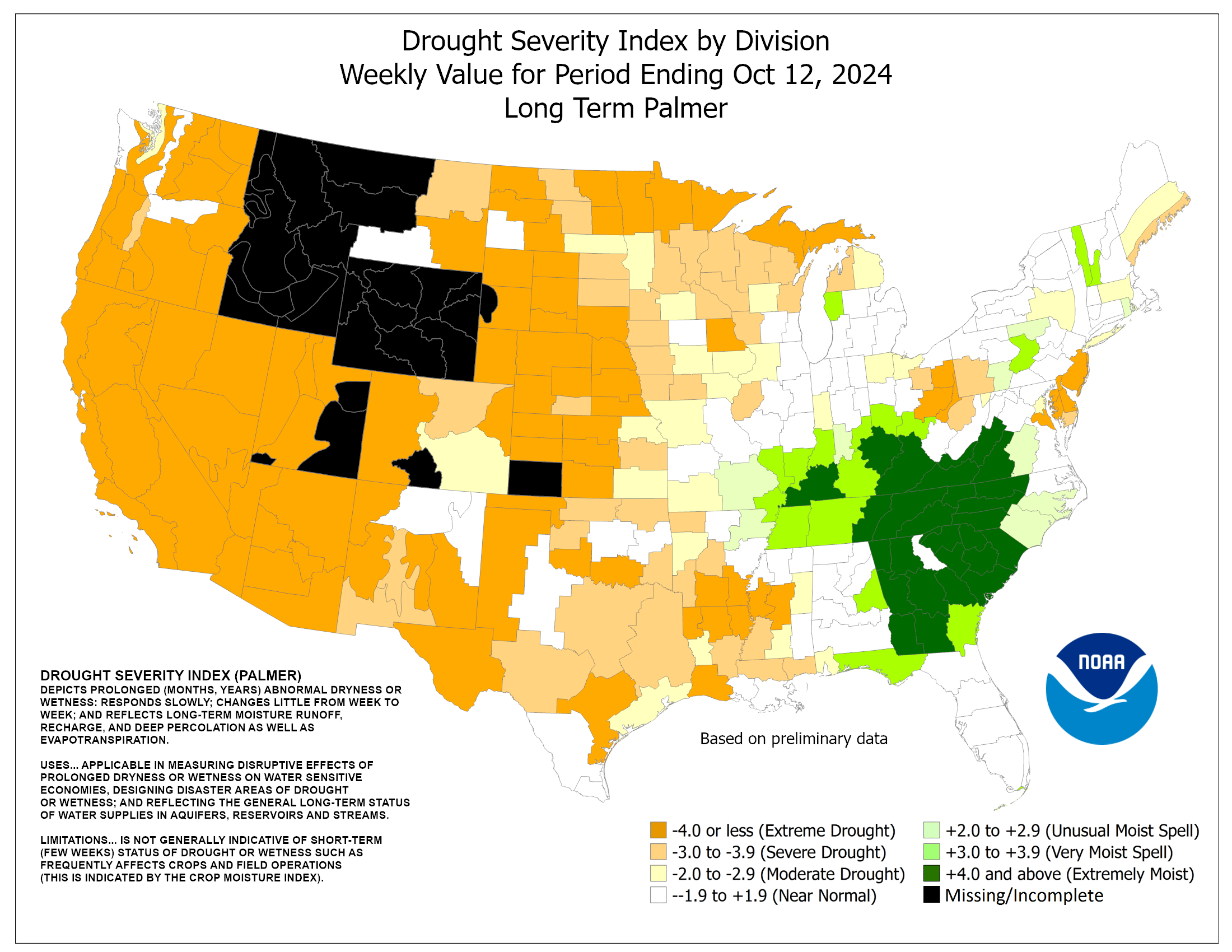
Currently, there is 0% of the Cornbelt/Midwest with drought. There is no place even slightly dry there. It has been dry(and very warm) in the Southeast though which has some drought. The map below is updated on Thursdays.
The market will be keying on precip forecasts for planting concerns for the next month.
https://droughtmonitor.unl.edu/

The ideal time frame for planting corn is now. The market is scrutinizing the 2 week forecasts every day.
This operational GFS model product is updated every 12 hours. The GFS is updated every 6 hour but this product is only updated for the 0Z and 12Z run. This is just 1 run, from 1 model. The week 2 portion is often volatile/changeable.
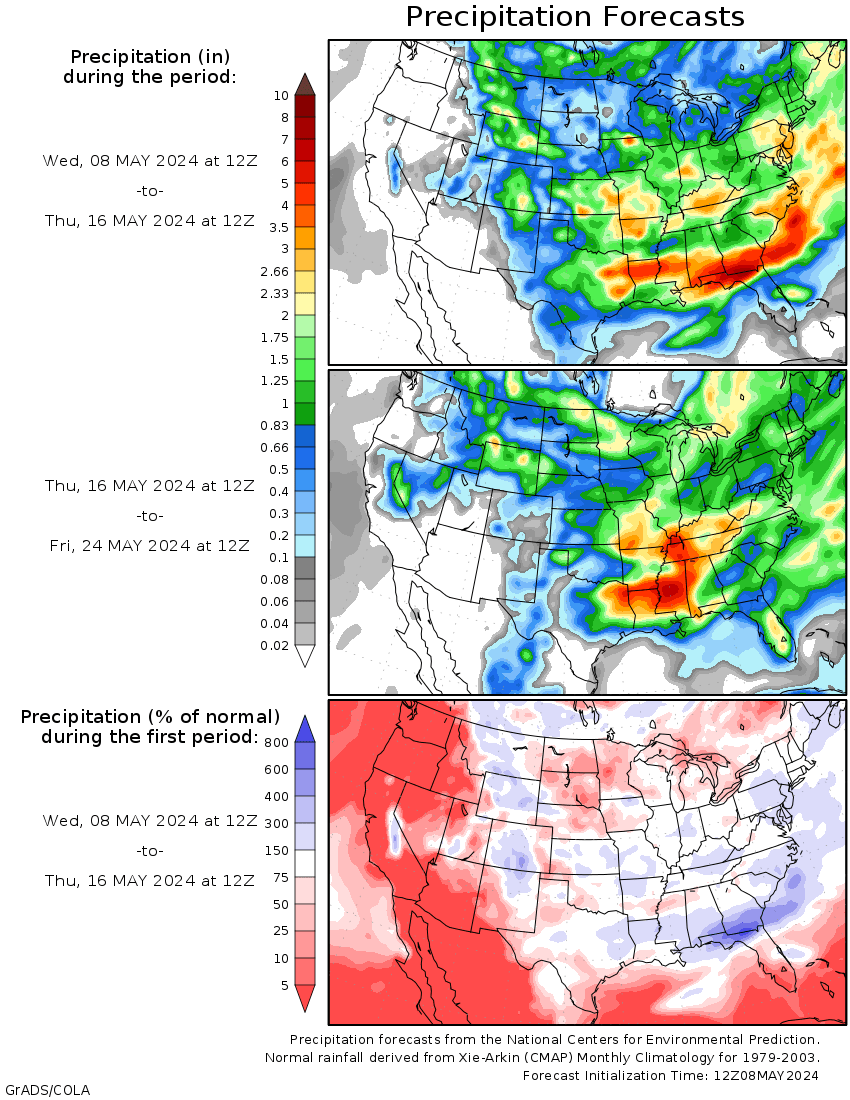
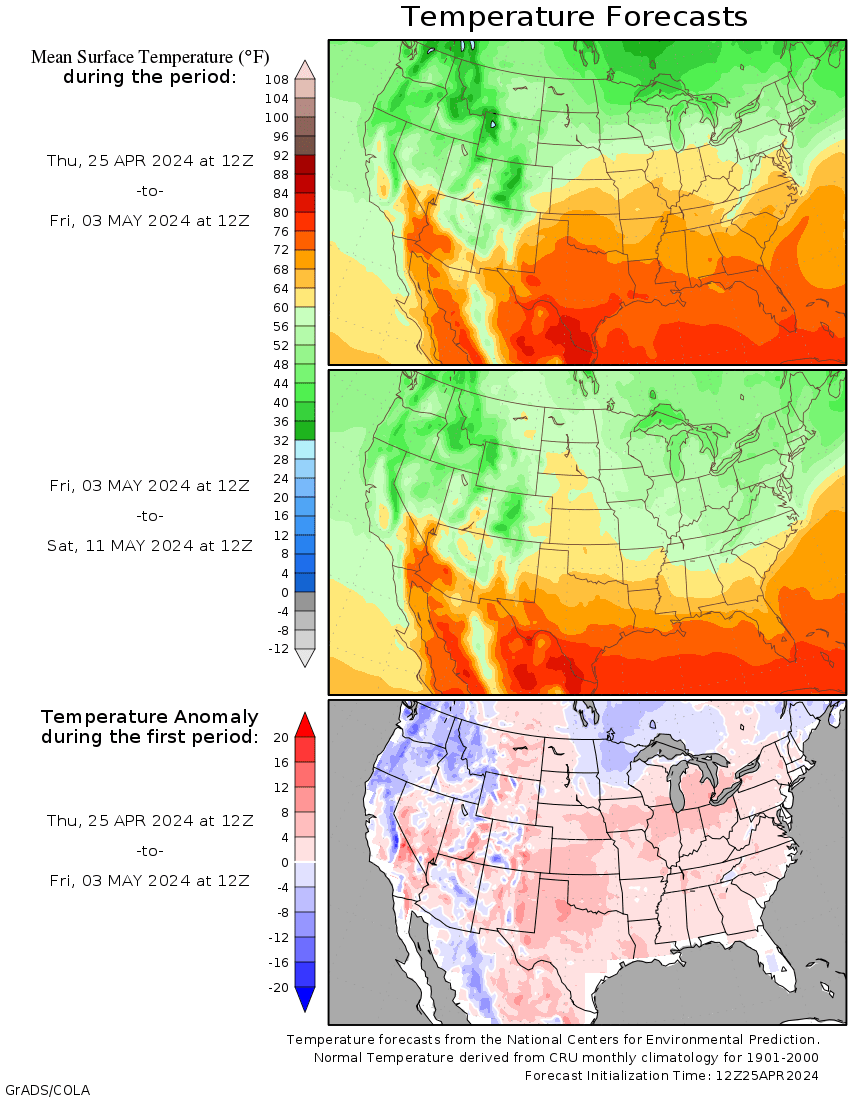
The top map is the Canadian ensemble average, the maps below are the individual members that make up the average at the end of week 2.
+++++++++++++++++++++++++++++++++++++++++
Each member is like the parent, Canadian model operational model.......with a slight tweek/variation in parameters. Since we know the equations to represent the physics of the atmosphere in the models are not perfect, its useful to vary some of the equations that are uncertain(can make a difference) to see if it effects the outcome and how.
The average of all these variations(ensembles) often yields a better tool for forecasting. It's always more consistent. The individual operational model, like each individual ensemble member can vary greatly from run to run.........and represent an extreme end of the spectrum at times. The ensemble average of all the members, because it averages the extremes.............from opposite ends of the spectrum.........changes much less from run to run.
End of week 2....................0z ensembles:
Analysis starting from a week ago, ending with today:
Last week+ of analysis, starting with the day farthest in the past. This is an end of week 2 forecast!
Last Monday: Wow, big spread in how to handle the southern stream. Half of the members are extremely bullish and wet. This is the wettest model and this is the end of week 2............which follows a dry period leading up to it.
Tuesday: After the dry period leading up to these maps(for late week 2) the Canadian model brings back the wet southern stream again. The amount of rain will be greatly affected by how strong the upper level ridge is in the Southeast. Today's run has that ridge weaker but not all solutions agree. Tomorrow will likely handle it a bit differently. Also a question of how much northern stream influence/air will be left from the cool period earlier.
Wednesday: HOLY COW! The upper level heat ridge in the Southeast bounces back and is flexing its muscles as it extends all the way back to the Ohio Valley up the East Coast! This will cause it to be HOT in the southeast and possibly back to the S.Midwest and up the East Coast. However, this model is by far the most bullish with the heat ridge. The upper level low is also impressive in the Southwest and southern stream flow emanating from that will be steered around the periphery of the ridge, where the heavy rains will be. The upper level high on this model is strong enough to potentially shield the waterlogged Eastern Cornbelt and keep it very warm and dry.
Thursday: The mean is not nearly as amplified with the upper level ridge in the Southeast today...........though some members have it with gusto. Much spread and uncertainty in solutions late week 2.
Friday: Upper level ridge and trough in the south are farther west today..........on the mean. Individual solutions are everywhere. Their location is key to where the heavy rains set up in week 2. Far enough west and rains get shut down in the Midwest, especially east. If the heat ridge sets up in the Southeast again, heavy rains return. Watching for this potential heat ridge and its location with regards to cooling demand and natural gas prices.
Saturday: Extreme variations and spread in the individual members yielding completely opposite solutions. This makes the mean of low less value because the majority DON'T show that particular pattern........they show something on one side or the other of the mean. So, possibly one extreme camp will be correct and the other will morph in that direction the next few days???? It's a result of the big battle between the long lived northern stream and southern stream flows, with amplification in week 2 and position of the large scale features at that time determining which one might win out. The Canadian model actually has more northern stream today (but still not a majority) vs the GFS below, which is the opposite of their positions yesterday. Only a minority have the big heat ridge building that is much more prevalent on the GFS.
Sunday: Heat ridge solutions in the southeastern 1/3rd (to larger) of the country rule today. How will the Pacific jet stream interact? Will it erode the heat ridge? Break the northern half down? Ride the periphery with the main ridge holding? Is the heat ridge that develops in week 1 just going to just be transient?
Monday: Pattern change time? Tons of uncertainty. How strong will a heat ridge be in the south and where will it locate? Powerful jet from the Pacific. Where will it track? The northern stream will be shifting around too. Potential for heavy rains around the periphery of a heat ridge with the large scale features lined up right.
360h GZ 500 forecast valid on May 28, 2019 00 UTC
0Z GFS Ensembles at 2 weeks:
Analysis, starting with the oldest, ending with the most recent:
Last Monday: Not as gung ho with the southern stream aimed at the Plains/Midwest as the Canadian model has been the last 2 days but it still starts turning wetter from the southwest again late week 2. It will depend on where the upper level ridge sets up. In the Southeast again..........and it turns wet again.
Tuesday: Turns very wet in the S.Plains later in week 2..........because the majority have the upper level ridge in the Southeast rebuilding. How wet and how far east/northeast and when are some good questions the market is asking right now. And how long will the dry period ahead of this last?
Wednesday: The GFS ensembles still have some ooomph left in the northern stream with the upper level low in the Northeast which keeps the upper level ridge in the Southeast from expanding as far north.
Thursday: A great deal of disparity in solutions. Overall, drier in the waterlogged Eastern Cornbelt.
Friday: Northern stream stronger on this model than the Canadian model on some solutions. Uncertainty in week, especially with destiny of southern stream large scale feature locations.
Saturday: Over half the members have a heat ridge somewhere between the S.Plains to Southeast, with a northern stream that gets bumped northeast and almost out of the picture, especially compared to yesterday. Stay tuned for changes.
Sunday: Individual solutions for the end of week 2 are as polarized as our political parties (-:
Monday: Will there be a heat ridge left from earlier and where might the location be? The Southeast is favored....slightly.

GFS Ensemble mean(average of all the individual solutions above). The first map is a mid/upper level map. The 2nd one is a temperatures map at around 1 mile above the surface. These are anomalies(difference compared to average).
Last Monday: The positive anomaly in the high latitudes continues as the main/obvious anomaly and it connects with a weak negative anomaly in far Southeast(a decent couplet) to favor northern stream flow directed south, into the US. Still a negative anomaly in the Southwest with southern stream potential...........that can be asserted with gusto in the Plains eastward if an upper level ridge builds in the Southeast again..........where we have a weak positive anomaly today.
Tuesday: The positive anomaly in the high latitudes is still there as a potential source for a northern stream with cool air aimed south. The big deal, however is the action from the very wet southern stream which will be modulated by a potential upper level ridge in the Southeast. We do see a positive anomaly there today which favors it redeveloping later in week 2. This steers/diverts the active/wet southern stream into the Plains and possibly points northeast..........along with pumping juicy Gulf of Mex air northward. Being late week 2, things will look a bit different tomorrow.
Wednesday: Several competing forces. 1. The high latitude positive anomaly coupling with the downstream negative anomaly in Southeast Canada that steers northern stream flow. This will aim cold fronts south of the US/Canadian border. 2. The upper level ridge/positive anomaly in the Southeast and negative anomaly in the Southwest/upper level trough associated with the very wet southern stream flow.........aimed towards the Plains. Where exactly these set up will determine where the most active weather will be with the warmest and driest weather most likely in the Southeast, coolest along the Canadian border. Wettest weather most likely in the S.Plains.............but how far east that expands is the biggest unknown.
Thursday: Positive anomaly still in the high latitudes but the coupling downstream may get broken as the downstream trough/upper level low/negative anomaly in Southeast Canada fills. This is tandem with an upper level ridge/positive anomaly growing in the east also suggests warming in the East. Weak negative anomaly in the west is going to modulate the energy from the jet stream and storms coming in from the Pacific.
Friday: Still the tenacious positive anomaly in the high latitudes coupling with a negative anomaly downstream in the Northeast acting as a block and source of northern stream chilly air being flushed south from Canada. Southern stream positive anomaly is a bit farther west today in the Plains, with the negative anomaly along the Southwest Coast, also a bit farther west vs Thursday. Watching for possible heat ridge in the south.
Saturday: The long lived northern stream couplet of positive anomalies in the high latitudes coupled downstream to negative anomalies in Southeast Canada/Northeast US may be getting disrupted. At the very least, the growing positive southern stream anomaly in the middle of the country may deflect northern stream influence to the north. This is a result of a building heat ridge. Still a negative southern stream anomaly in the Southwest (trough of low pressure), coupled with the down stream upper level ridge/positive anomaly, under that right conditions can lead to excessive rains around the periphery of the ridge( especially if it sets up in the Southeast) or could shut down the rains underneath it for much of the Cornbelt if it sets up farther northwest.
Sunday: Long lived northern stream influence looks to be fading and migrating north as a building positive anomaly takes over in the Eastern half of the US and brings heat(except maybe the far Northeast). How the negative anomaly in the west interacts with the upper level high is uncertain with regards to exact location of the large scale features but confidence is high for heat in a large area(dry under the center of the heat ridge) and wet around the periphery.
Monday: Anomalies in the US don't help much, mainly because the contrasting individual solutions offset each other when averaged out. When you have this, you have uncertainty.
Latest, updated graph/forecast for AO and NAO here, including an explanation of how to interpret them.
Previous analysis, with the latest day at the bottom for late week 2 period.
Last Saturday: Still negative AO/NAO and likely modulating chilly air masses tracking well south into the US. Also suppressing the southern stream and drying things out some. PNA near 0.
Sunday: Very negative AO, NAO negative but increases some late.........so it should be chilly. PNA around 0 but increases a tad late week 2.
Monday: Negative AO and NAO, strong enough, with the pattern to flush air from high latitudes in Canada, southward to mid latitudes, farther south in the USA. So cool weather continues thru week 2. PNA a tad positive.
Tuesday: Negative AO and NAO cause cool weather influence well into week 2. NAO increases late in the period. PNA around 0.
Wednesday: Negative AO and NAO cause cool weather influence but things may be changing farther south late in week 2 with regards to the upper level ridge in the Southeast. PNA a bit positive.
Thursday: Negative AO. NAO negative but increasing late with potential pattern change in the East back to warmer. PNA positive.
Friday: Tenacious negative AO and NAO maintain and act in favor of cooler air transport southward from higher latitudes, as least well into week 2. PNA slightly positive.
Saturday: Still negative AO with the high latitudes not changing a great deal but NAO increases a bit. Mid latitudes could be changing, with potential for more warming from the south in a manner that these indices are not designed to capture well(since they are NORTHERN stream flow indicators). PNA a tad positive.
Sunday: AO and NAO increasing to almost 0 near the end of week 2(after being solidly negative for a couple of weeks)...........suggesting a pattern change that takes out the northern stream influence that has been around for quite some time. PNA near 0.
Monday: AO and NAO increasing. PNA decreasing. Pattern change?
National Weather Service 6-10 day, 8-14 day outlooks.
Last Wednesday: Looking to see how much rain returns in the later period(from the west) and heat building again in the Southeast.
Thursday: How long will the dry weather in the 6-10 day hold on to the Eastern Cornbelt? Temps should start warming in the 8-14 day.
Friday: Wetter in the west into the Plains, drier in the Eastern Cornbelt/East. Temperatures uncertain trend.
Saturday: Should be pretty wet again but this is dependent on where a potential heat ridge sets up. The GFS products have been pretty gung ho on the heat ridge the past 24 hours vs the European model but todays extended NWS products should continue to turn up the heat in the eastern half, while staying cool West.
Sunday: Look for heat to increase and be dominant in the eastern half. Cool in the west. More reain west, less east.
Monday: For sure heat Southeast half/cool Northwest in the 6-10 day and more rains northwest, less East. Regardless of what the 8-14 day shows today, I wouldn't put much faith in it.
Temperature Probability | |
Precipitation Probability | |
| the 8-14 day outlooks ArchivesAnalogsLines-Only FormatGIS Data | |
Temperature Probability | |
 | |
Craig Solberg @CraigSolberg 1h1 hour ago
Last 11 months for the Corn Belt...wettest on record (2016 ranks as number two followed by 1994, 1973, and 2011)

Craig Solberg @CraigSolberg 1h1 hour ago
Like March...PDSI for April in the Corn Belt highest ever Makes case that the Corn Belt is wetter than it has EVER been for this time of year (glass half empty)? Makes case the Corn Belt has the best soil moisture conditions ever going into a growing season (glass half full)?

Previous posts:
Re: Re: Re: Re: Weather Sunday
By bcb - May 12, 2019, 12:26 p.m.
I'll call the corn market higher tonight. IL. is dead with planting progress.
Remember S.D and N.D. was going to plant 1.6 mil acres more of corn than last yr. too.
Trade will watch weather real close now that were at the May 15th date.
PP acres here we come
Sorry bcb,
I didn't see this post because it was wedged in between my weather maps yesterday.
We added alot of heat to the forecast on Sunday for fast drying and rains hold off long enough for many areas to catch up planting.........as the market looks ahead.
Planting progress number tonight will be bullish though, reflecting your observations. However, the market will see 80's for several days in IL, starting later this week allowing producers to finally do some planting.
Good point on the Dakotas. This is where the new zone of heavy rains could set up........to the Upper Midwest, next weekend. That would turn corn bullish again and may already be supporting us off the lows on Monday Morning.
Planting number on corn at just 30% did come in bullish vs 35% expectations:
https://www.marketforum.com/forum/topic/30094/
Extreme weather days 3-7(Stormy Plains and points a bit east)

Extreme Weather days 8-14(hot Southeast)
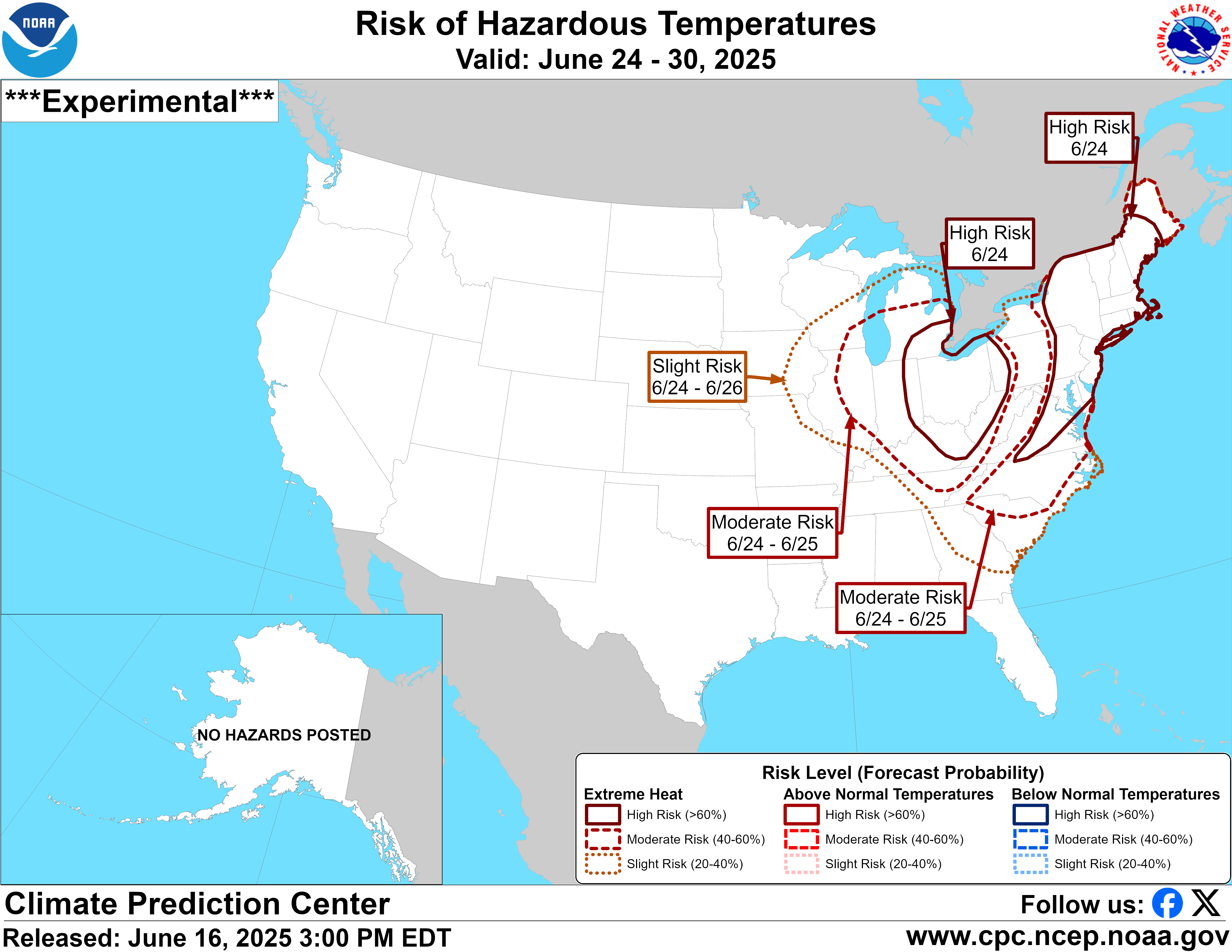
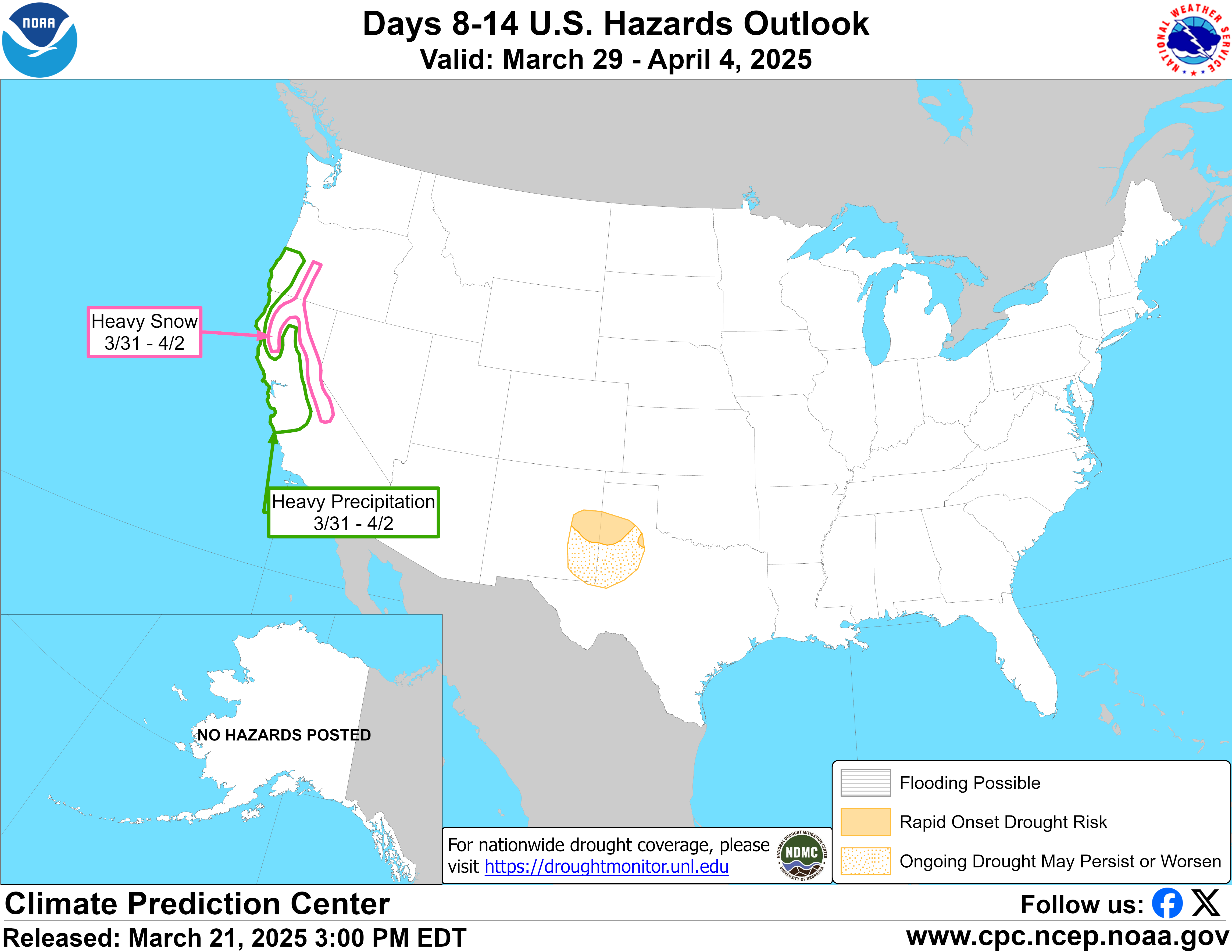 |